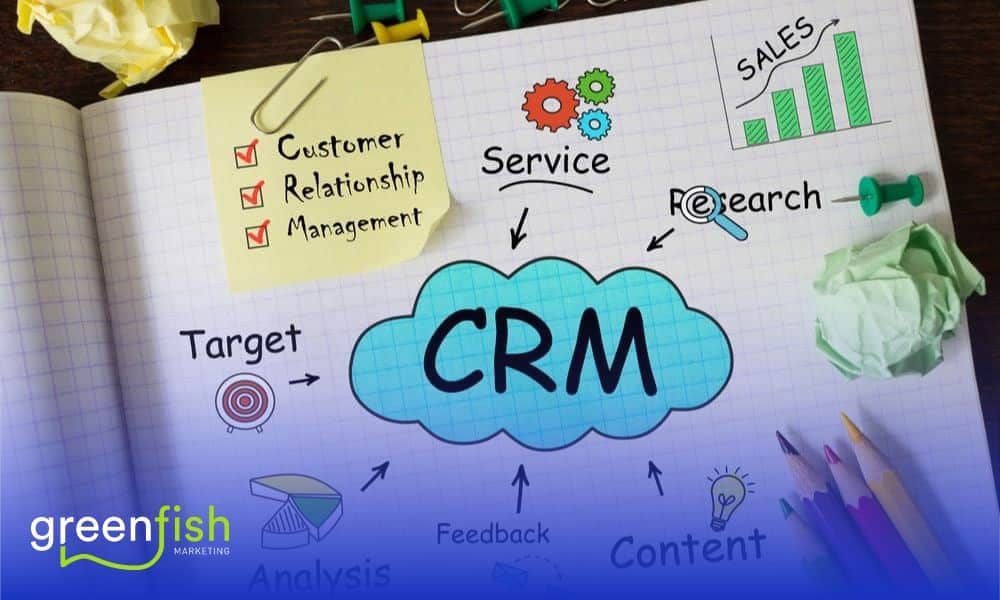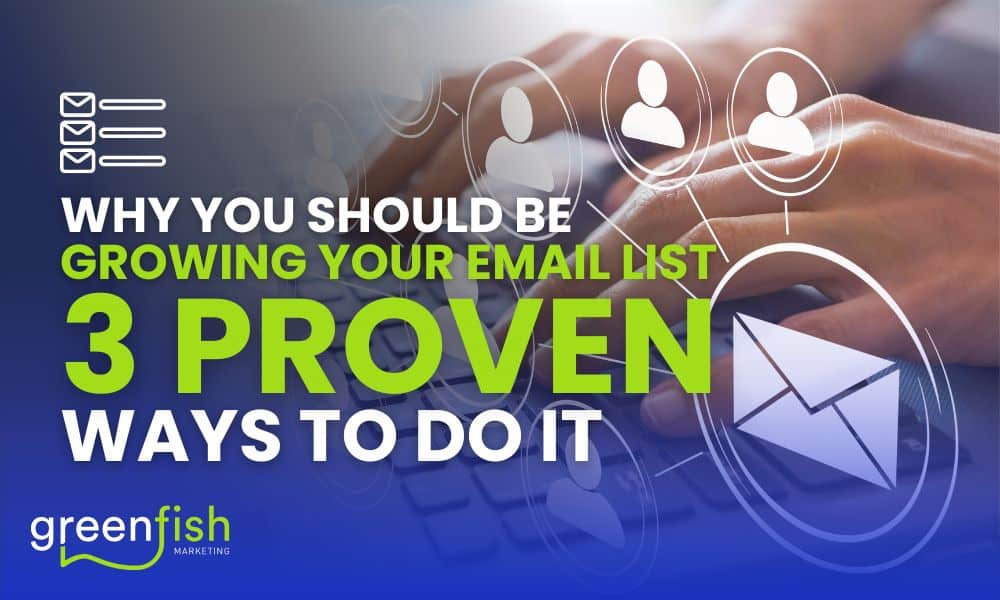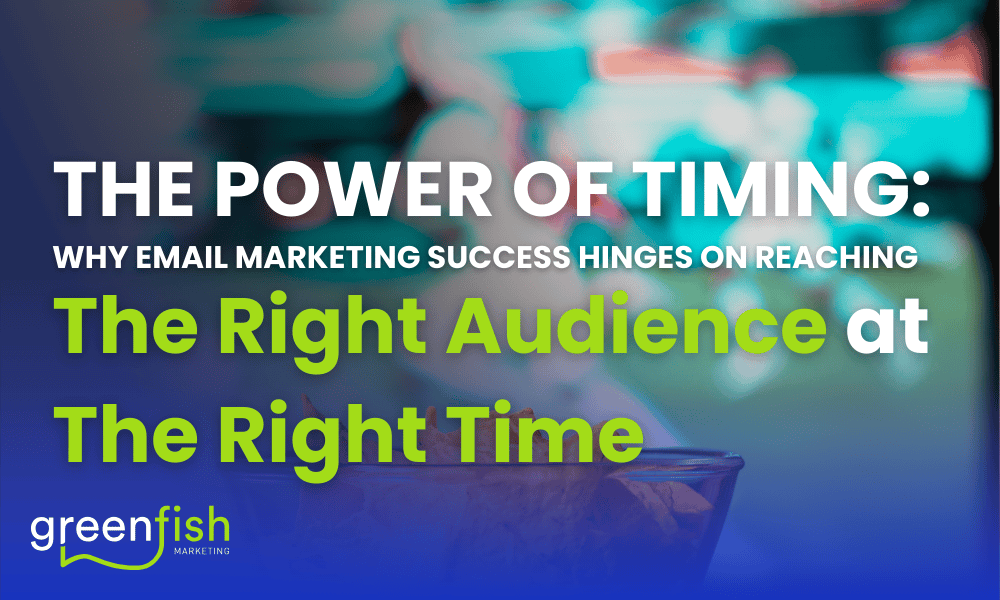A customer relationship management (CRM) solution is an essential aspect of an effective digital marketing strategy. Adding value to your business, CRM solutions allow you to track customer details through a central database that is accessible to your employees.
If the CRM is set up correctly and used wisely, it’s so much more than just a data retrieving too. You can improve customer retention and save a large chunk of your spending without doing much, giving you time to focus on other business activities. Talk about a win-win situation!
With that said, several companies who use CRM software aren’t able to exploit its full potential. Additionally, a CRM system is only valid until the data it offers is current and relevant. Customer data can lose relevance by 30-70% per year, thus causing companies to lose profits also. Even if you have the latest CRM software installed at your company, it’s of no use if the data it provides is not up to date. This is why the team at Greenfish Marketing have put together this blog, teaching you a little thing about optimising your CRM strategy.
1. Automation of Basic Tasks
Automation is one thing that some business owners are not utilising because of an apparent lack of time. One needs to understand that getting a customer is not the final destination. Once you get a lead, you may need to nurture this customer journey throughout and that’s where CRM comes into play.
Task automation allows you to schedule calls, send automated emails to new or existing customers, redirect them to the right business contact and much more. These tricks allow you or your team to manage more significant tasks while fills the gaps creating consistency and a streamline customer experience .
Today, CRM vendors are working at making automation easier and more efficient than ever before. A CRM strategy can ultimately automate all of your workflows completely, with personalisation and performance at the forefront.
2. Integration of all your systems
Integration helps in preventing fragmented information from various systems to spread in an uncontrolled manner and ensure the information is accessible through a central data sharing point. A unique system approach is feasible for a small business, but as a business grows, so will the system requirements. That’s where integration comes in. Therefore, integrating all the systems as early as possible will let your business grow without to much interruption.
3. Use your CRM to get Business Intelligence
Your CRM is not just to help you improve customer relationships. It is also equipped to give you precious insights on your business performance. A good CRM system stores all the customer intelligence in a single source of truth. The storage allows you to get data and analyse all types of behavioral patterns: connect problems to causes, channels and come up with a solution.
On top of this, a CRM software comes with an adaptive sales enablement and even assists before opening your business. A CRM using adaptive sales enablement can also evaluate prospective buyers’ expectations and teach you how to pitch your sales.
4. Ensure your team understand it
Just like buying a car, the sticker price of a CRM system is only half of the cost (initial until your want and need more). You should be investing in it’s value along the way, such as onboarding, training, and compatible software. These will keep your CRM up-to-date and running at its fullest. It’s a long-term investment but one you won’t look back on.
The CRM is a significant data warehouse for your business that needs add-on tools from time-to-time to work efficiently. For your business to work efficiently, your team needs to know how to befriend CRM. As they say, “work smarter, not harder”, a CRM only works best when your team understands it’s relevance and how to benefit from it.
5. Use Cross-Channel Behavior History to Predict New Customer Preferences
CRM software, as highlighted, collects all your data in one place. As time passes, several companies forget about the data they’ve collected when they could use it to get insight into customer behaviour. Your customer’s history can reveal some insight into their new needs, so you can swoop in to pitch your offer.
Analysing this data will also let you understand general customer behaviour, for instance, which channels are most active. It will tell you what factors impact interactions and sales. This data also shows you which products are in high demand and vice versa.
To maintain a high customer satisfaction index, your customers must be aware of how you do things. To make sure your processes run smooth, consistent and face fewer hurdles – defining guidelines is essential. Most CRMs come with an Enterprise Resource Planning (ERP) solution, allowing you to add playbooks and establish guidelines for different processes directly in the solution.
6. Customise your CRM
By now, you would have realised that your CRM is your company’s face. A customer meets you through your CRM strategy for the first time, therefore, you must use it to create a positive impression.
When you’re optimising CRM software, it’s beneficial to consider your overall brand strategy. This is to help you deliver consistent service and message through all channels, to meet your customers’ expectations. You can also try and improve navigation to deliver a seamless user experience. Once done, it will help you dodge disputes of interests and failed purchases.
7. Updating customer data from time to time
Stale data is a cause of concern. If you want your CRM to work efficiently, make sure you update customer data regularly. Once you update the information, you or your team won’t be wasting time on searching and gathering. In place of it, your team will focus on the customer itself and bag the deal ASAP.
8. Use KPIs to Measures your Customer Engagement Activities
A Key Performance Indicator (KPI) helps you measure how well your business is completing its objective. Set up KPIs on your CRM so that it can keep an eye on all channels. You can use it to measure customer engagement activities and look for areas that need improvement.
You can set up some KPI on your CRM software such as email click-through rate, number of lost leads, and the number of complaints per month. Since business parameters vary according to companies, you can check and define a KPI that you know are most valid for your business.
Conclusion…
There is no 1 size fits all CRM strategy, it all comes down to your business and how you customise your CRM to get the best out of it. Modelling optimisation off the steps will help you get more out of your data, reduce extra costs and make your CRM software work best for you.
Ready to take your CRM strategy to the next level? Greenfish Marketing is a Strategic Marketing & Automation Agency. Book a strategy call today and see how we can assist in optimising a new or improve CRM strategy for your business.



